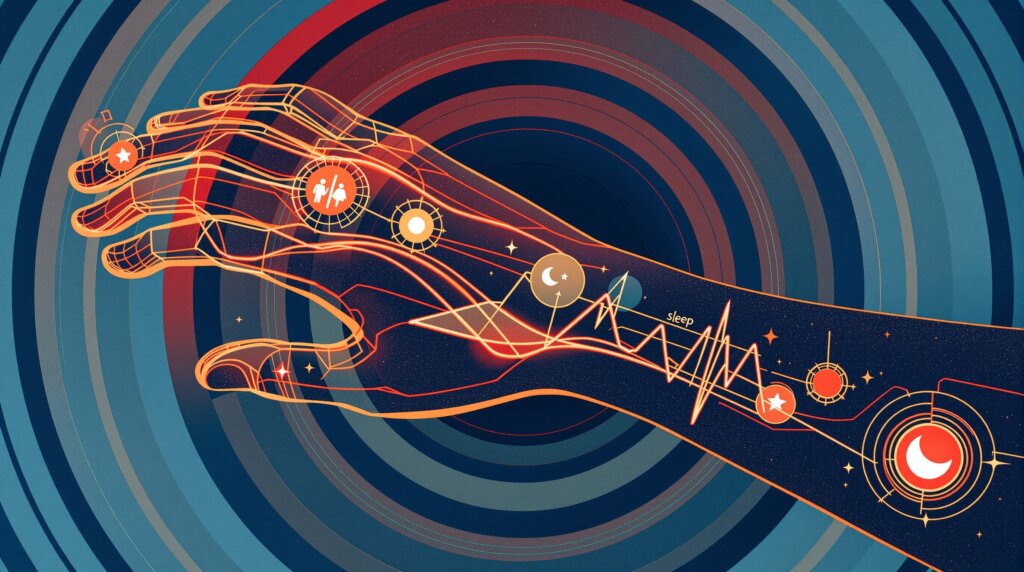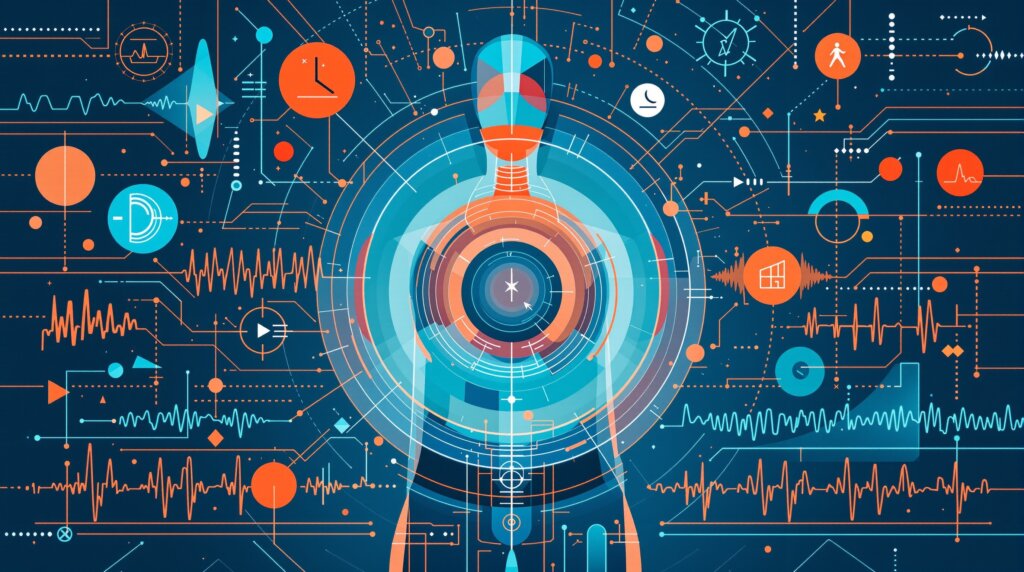The Rise of Smart Ring Technology in Health Monitoring
A New Era of Discreet Health Tracking
The health monitoring landscape has undergone a remarkable transformation, with smart rings emerging as one of the most compelling innovations of 2025. These sophisticated devices represent a significant shift from bulky fitness trackers to elegant, discreet wearables that seamlessly integrate into daily life. Unlike traditional wearables, smart rings offer continuous health monitoring without the visual prominence or potential discomfort of larger devices.
The appeal of health monitoring rings lies in their ability to deliver medical-grade accuracy while maintaining the aesthetic appeal of fine jewelry. Users no longer need to choose between fashion and function—these devices often blend so naturally with personal style that others may not even realize they’re looking at advanced health technology. This discrete approach has opened up health monitoring to individuals who previously found traditional fitness trackers too conspicuous or cumbersome for everyday wear.
However, it’s worth noting that the smart ring market is still evolving, and not all devices deliver on their promises equally. While the technology has advanced considerably, users should maintain realistic expectations about accuracy and limitations.

Essential Features That Define Leading Health Monitoring Rings
Heart Rate Monitoring: The Foundation of Cardiovascular Health
Most modern health monitoring rings utilize Photoplethysmography (PPG) technology to track heart rate continuously throughout the day and night. This optical sensor technology works by detecting blood volume changes in the finger, providing insights into not just resting heart rate but also heart rate variability (HRV)—a crucial metric for understanding stress levels and recovery status.
The accuracy of PPG sensors in ring form factors has improved significantly, though they’re not always as reliable as chest-strap monitors, particularly during high-intensity activities. Motion artifacts can sometimes interfere with readings, and factors like skin tone, ring fit, and ambient temperature may occasionally affect accuracy. Despite these limitations, the continuous nature of ring-based monitoring often provides more comprehensive data than sporadic measurements from other devices.
Sleep Architecture Analysis: Beyond Simple Sleep Tracking
Sleep monitoring represents one of the strongest applications for smart rings. The intimate contact with the finger and minimal movement during sleep creates ideal conditions for accurate data collection. Leading devices can distinguish between light sleep, deep sleep, and REM stages with reasonable accuracy when compared to polysomnography (PSG), though they’re not quite at clinical-grade precision.
These devices excel at identifying sleep patterns and trends over time, which can be more valuable than single-night accuracy. Users often discover insights about their sleep efficiency, wake frequency, and how lifestyle factors impact their rest quality. However, it’s important to understand that even the best consumer sleep tracking isn’t a substitute for professional sleep studies when dealing with serious sleep disorders.
Advanced Health Metrics: Expanding Beyond the Basics
Today’s leading smart rings incorporate additional sensors for blood oxygen levels (SpO2), skin temperature variations, and in some cases, even ECG capabilities. Temperature monitoring has proven particularly valuable for women’s health tracking and early illness detection, while SpO2 monitoring can provide insights into respiratory health and sleep quality.
Some premium models now include blood pressure monitoring capabilities, though these features are still emerging and may not yet match the accuracy of dedicated blood pressure devices. The integration of multiple sensors allows for more comprehensive health profiles, but users should be aware that more features sometimes mean increased complexity and potential for inconsistent readings.
Comprehensive Analysis of 2025’s Top Health Monitoring Rings
1. blēo Ring: Premium Longevity-Focused Design
The blēo ring stands out in the 2025 market for its focus on longevity signals rather than just basic activity tracking. Built with medical-grade sensors and 316 stainless steel construction, it offers a unique approach to health monitoring through personalized AI coaching that emphasizes realistic, stress-free improvements.
What sets the blēo ring apart is its no-subscription model and 10-day battery life, addressing two common pain points in the wearable market. The device focuses on key longevity metrics like biological age assessment, HRV analysis, and deep sleep optimization. Its IP68 waterproof rating and elegant design make it suitable for continuous wear, while the advanced sensors provide reliable data for long-term health trend analysis.
2. Bodimetrics Prevention Circul+: Medical-Grade Monitoring
The Bodimetrics Prevention Circul+ represents the clinical end of the smart ring spectrum, featuring FDA-cleared ECG capabilities and blood pressure monitoring. This device is particularly appealing to users with existing cardiovascular concerns or those seeking medical-grade accuracy in their health monitoring.
While the medical-grade features are impressive, the device tends to be bulkier than fashion-focused alternatives and may require more frequent charging. The comprehensive health data it provides can be valuable for healthcare provider consultations, though the complexity may overwhelm casual users seeking simpler health insights.
3. Helio Ring: Subscription-Free Simplicity
The Helio Ring appeals to users seeking straightforward health tracking without ongoing subscription fees. It covers essential metrics like heart rate, sleep tracking, and activity monitoring while maintaining a relatively affordable price point.
The device offers solid basic functionality, though it may lack some of the advanced features and AI-driven insights found in premium alternatives. Its strength lies in simplicity and cost-effectiveness, making it accessible to users new to health monitoring rings.
4. Advanced Sleep-Focused Models
Several newer entries in the market focus specifically on sleep optimization, offering detailed sleep stage analysis and personalized recommendations for sleep improvement. These devices often excel in sleep tracking accuracy but may provide limited insights for daytime activities.
5. Comprehensive Activity Trackers
Some smart rings position themselves as complete activity and health monitors, attempting to replace traditional fitness trackers entirely. While ambitious, these devices sometimes struggle with the inherent limitations of the ring form factor for activity tracking, particularly for exercises involving significant hand movement.
Understanding the Limitations and Practical Challenges
Accuracy Considerations and Real-World Performance
While smart rings have made impressive technological strides, they’re not without limitations. Motion artifacts during exercise can sometimes affect heart rate accuracy, and the ring must fit properly to ensure consistent sensor contact. Unlike wrist-worn devices, rings can be more sensitive to swelling, cold temperatures, or changes in finger size throughout the day.
Users should also be cautious about over-interpreting data or making significant health decisions based solely on ring readings. These devices excel at identifying trends and patterns over time but may not always provide the precision needed for immediate medical decisions. False alarms can occur, particularly with features like irregular heart rhythm detection, and it’s crucial to understand that these devices complement, rather than replace, professional medical care.
The positioning on the finger, while generally good for sleep and resting measurements, isn’t always optimal for exercise tracking. Activities involving significant hand movement or grip changes can sometimes lead to inconsistent readings, making rings less reliable than chest straps for workout heart rate monitoring.
Making the Right Choice for Your Health Journey
Smart rings represent a compelling evolution in personal health monitoring, offering unprecedented convenience and discretion for continuous health tracking. The best devices successfully balance advanced sensor technology with elegant design, providing valuable health insights without disrupting daily life.
When choosing a health monitoring ring, consider your primary goals: whether you’re focused on sleep optimization, cardiovascular health, longevity tracking, or general wellness monitoring. Factors like battery life, subscription requirements, and the specific metrics that matter most to your health journey should guide your decision. Remember that the most sophisticated device is only valuable if it encourages consistent use and helps you make positive lifestyle changes based on the insights it provides.
Frequently Asked Questions
Which health monitoring ring is best in 2025?
Are health rings accurate for tracking sleep and recovery?
Can a health monitoring ring detect heart problems like atrial fibrillation (AFib)?
How long does the battery last and how often will I need to charge a ring?
Will these health rings work with my iPhone or Android and sync with health apps?



